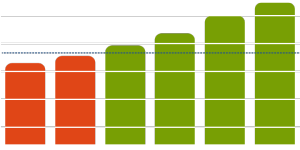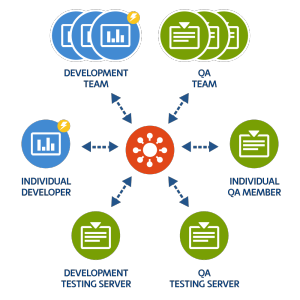 Regardless of your political persuasion, I think there are very few developers who don’t cringe when they think about the healthcare.gov debacle that has consumed U.S.and global headlines for the past few months. System errors, complete outages, screens that wouldn’t load and forms that couldn’t be processed or even started.
Regardless of your political persuasion, I think there are very few developers who don’t cringe when they think about the healthcare.gov debacle that has consumed U.S.and global headlines for the past few months. System errors, complete outages, screens that wouldn’t load and forms that couldn’t be processed or even started.
Politicians have denounced, the President has apologized and Congress has begun hearings. Painful on every level. It will be a while until all of the facts are available, but there are a few trends that have already come to light that are well known by all who write, test and deliver software applications.
Test Your Code Or Your Code Will Test You
Quality code matters. One of the essential elements of determining the quality of your code is testing. The percentage of your code that is tested is directly proportional to your confidence that it will perform. Those familiar with Test Driven Development understand this fact. Code that is well designed and well tested inspires confidence. The more mission critical your applications are to your business, the more important that confidence factor becomes.
At NCover, we see see this trend every day in the types of customer who employ code coverage as part of their confidence equation. Financial services firms, insurance firms, medical hardware and software firms and transportation firms are just a few examples of the industries where we continue to see the broadest adoption of code coverage. There is a reason. Those industries can ill-afford to be tested, especially publicly, by their code.
Not surprisingly, as reported by Buinsess Insider in its article by AP Writer Jack Gillum, “The Coders Who Built The Obamacare Website Knew It Had Huge Problems,” when they attempted “last-minute requests for changes” on a system that was “complex, ambitions and unprecedented” and only left a limited and reduced number of weeks for testing, it did not end well for healthcare.gov. Lesson learned. Again.
Complex Code + Sloppy Process = Major Disaster
Software applications are designed and entrusted to handle many of the world’s most complex problems. In fact, although the layman may view healthcare.gov as a website, most in the industry understand that it is much more than just a few webpages that didn’t load. It is a complex platform tying together multiple systems and databases. Applications of this size and scope benefit from rapid development and testing cycles with continuous feedback. At NCover, we are privileged to work with leading development teams at some of the world’s largest companies. Regardless of industry, what we consistently see from the most successful and productive organizations is that measuring test coverage and code complexity for them is part of a proactive and positive development feedback loop that results in lower overall development costs, higher quality code and more satisfied customers.
The commitment to write quality code may ulitmately rest on the shoulders of individual developers and QA members, however, in our experience the commitment to quality code as a mantra is most successful when it is driven by team leads and management. The process of collecting code coverage in .NET is easier than ever with NCover. Whether you are in development, QA or responsible for a team, we have a proven solution for In fact, it costs you nothing to start and can ultimately end up ensuring the health of your code for all of your customers.


[…] Code Coverage Impacts Your Health(care) (Kerry Meade) […]